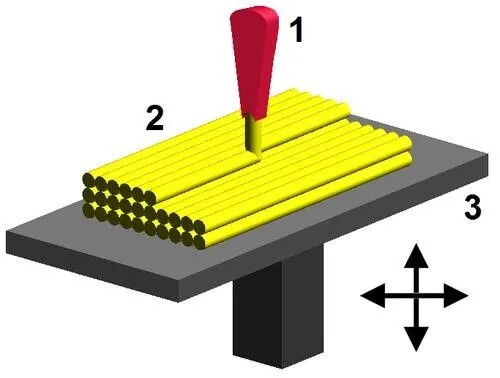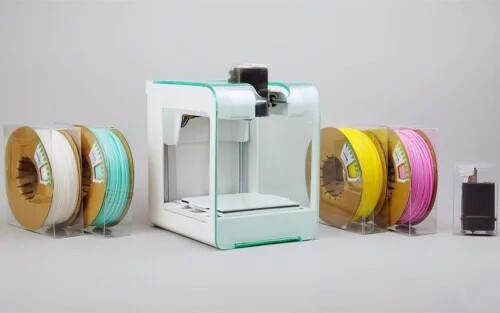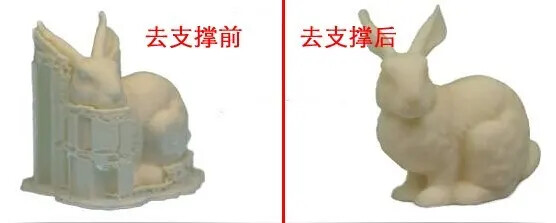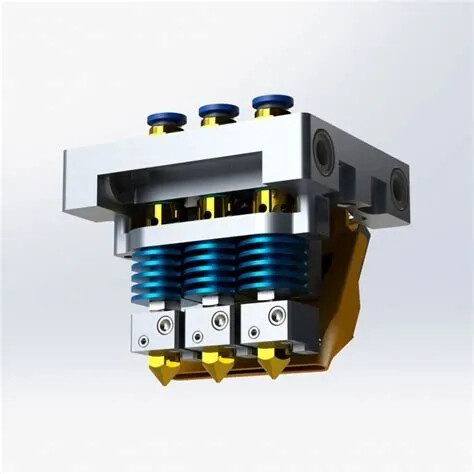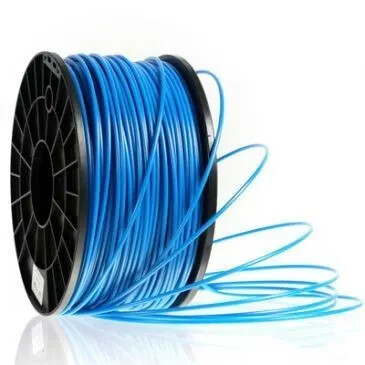1. Principle
Fused Deposition Modeling (FDM) works by heating a solid plastic filament to its melting point and extruding it through a nozzle onto a working platform in layers. The liquid material solidifies as it cools, forming a three-dimensional object. The basic principle of FDM can be visualized as shown in the diagram below.
2. 3D Printer
Currently, there are two main types of 3D printers: desktop and industrial. The key differences lie in the build size and printing precision. Generally, industrial-grade printers have larger build sizes and higher precision, while desktop models have smaller build sizes and lower print speeds. However, with continuous improvements, desktop 3D printers are gradually achieving higher precision.
3. Support Structures
If a part being printed has suspended or overhanging sections, the printer can first create a base layer for support. This support structure is essential to hold the suspended part in place during the printing process. After the model is printed, the support can be removed, usually by cutting or trimming. The amount and placement of support structures depend on the model’s orientation on the print bed. The proper placement can minimize the need for support.
4. Print Head
The most crucial component of an FDM printer is the print head. It performs three main functions:
- Feeding the filament: The solid plastic filament is fed into the print head.
- Heating: The filament is heated to its melting point to form a molten state.
- Extruding: The heated material is extruded from the nozzle and deposited onto the build platform in precise layers.
Some 3D printers are equipped with multiple nozzles, allowing for printing with different materials at the same time. This capability can enable multi-color printing, resulting in visually appealing models.
5. Materials
FDM printers commonly use thermoplastic materials, such as:
- PLA (Polylactic Acid): An eco-friendly material that is biodegradable.
- ABS (Acrylonitrile Butadiene Styrene): A durable and impact-resistant material.
- Nylon: Known for its strength and flexibility.
- PHA (Polyhydroxyalkanoates): A biodegradable polymer. Additionally, materials like wood fibers, metal powders, and carbon fiber can be mixed with PLA or ABS to print models with specific textures, such as wood-like, metal-like, or high-strength characteristics. Some printers even use glow-in-the-dark materials, which emit a green light after being exposed to light for 15 minutes.
6. Drawbacks
As a low-cost, fast-forming technology, FDM has several drawbacks:
- Surface Quality: The printed objects often have visible layer lines and a rough surface, making them unsuitable for high-precision or fine-detail applications.
- Strength: The strength of the printed part in the vertical direction (along the Z-axis) is weaker than in other directions.
- Support Structures: Designing and creating support structures for printing overhangs adds complexity to the process.
- Longer Print Time: FDM requires the entire cross-section of the model to be scanned and coated, leading to longer print times.
- Support Removal: Removing support structures can be tricky, especially for delicate models.
FDM printing remains one of the most accessible and widely used 3D printing technologies, offering a balance between affordability and versatility. However, for higher precision and better surface finishes, other 3D printing technologies may be more suitable.
